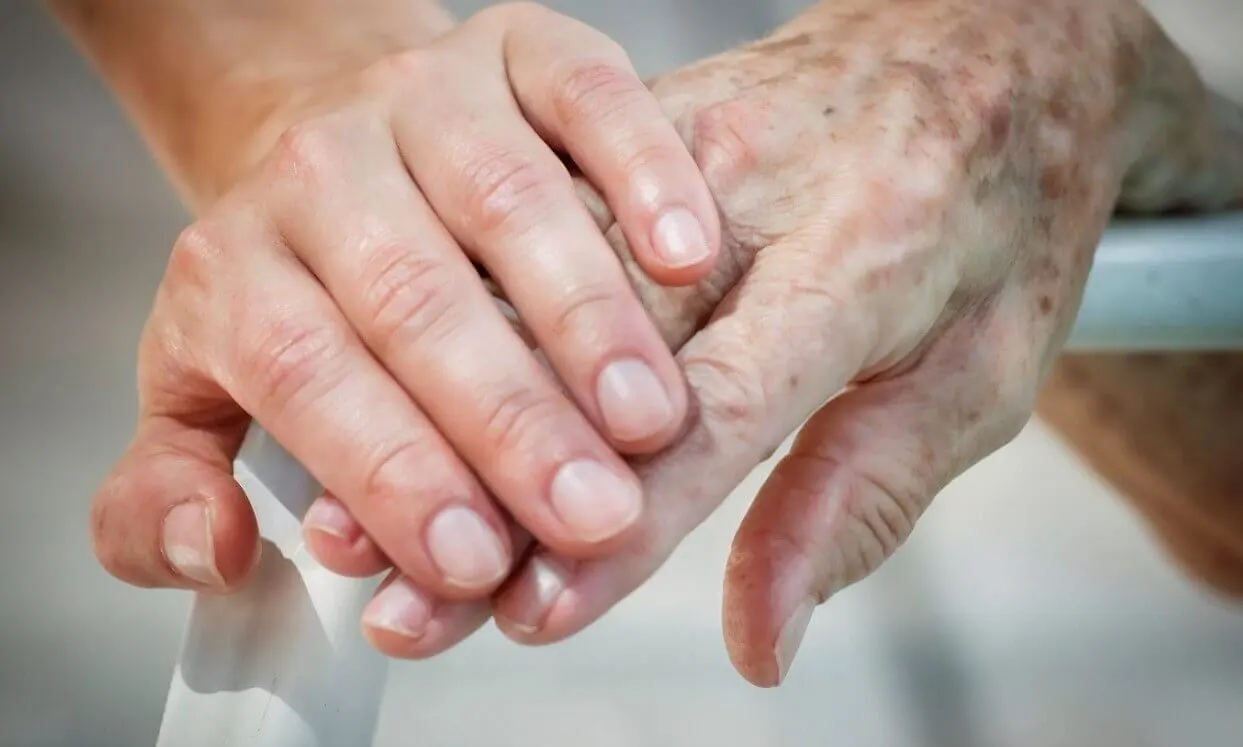Top 5 Health Concerns for Seniors
This article covers the top 5 health concerns for seniors and how. We will also provide tips and resources for seniors and their families to find and access hospice services in Los Angeles. As people age, they become more susceptible to chronic diseases, which are long-lasting and often incurable conditions that affect their physical and mental health. According to the Centers for Disease Control and Prevention (CDC):
Chronic diseases are the leading cause of death and disability among older adults in the US, accounting for 75% of their healthcare spending. Some of the most common chronic diseases among seniors are heart disease, arthritis, diabetes, dementia, and cancer.
There is a way to provide better support and care for seniors with chronic illnesses so they can live more comfortably and with dignity. It’s known as hospice and palliative care. These types of care focus on improving the quality of life and easing the suffering of people with serious illnesses, regardless of their outlook or treatment plan. Hospice care provides a range of services for seniors and their families, including:
- Symptom management: Hospice care helps seniors control their pain and other physical symptoms, such as nausea, shortness of breath, or constipation, using medications, therapies, or devices.
- Emotional support: Hospice care helps seniors cope with their emotions, such as fear, anger, sadness, or guilt, using counseling, support groups, or relaxation techniques.
- Spiritual care: Hospice care helps seniors find meaning and purpose in their lives, regardless of their religious or cultural background, using chaplains, rituals, or meditation.
- End-of-life planning: Hospice care helps seniors express their wishes and preferences for their end-of-life care, such as where they want to die, who they want to be with, or what treatments they want to receive or refuse, using advance directives, living wills, or health care proxies.
Heart Disease
Heart disease is a general term that encompasses any condition affecting the heart or blood vessels, including coronary artery disease, heart failure, arrhythmia, and valve disease. It is the primary cause of death among older adults in the US, responsible for about one in every four deaths. Some common symptoms of heart disease include:
- Chest pain or discomfort
- Shortness of breath
- Palpitations or irregular heartbeat
- Dizziness or fainting
- Swelling in the legs, ankles, or feet
- Fatigue or weakness
Risk Factors For Heart Disease
- Age: The risk of heart disease increases as the heart and blood vessels become less flexible and more prone to damage.
- Family history: The risk of heart disease is higher if a close relative, such as a parent or sibling, has had heart disease, especially at a young age.
- Smoking: Smoking damages the lining of the blood vessels, increases blood pressure, and reduces oxygen delivery to the heart.
- High blood pressure puts extra strain on the heart and blood vessels, increasing the risk of heart attack, stroke, or heart failure.
- High cholesterol can cause fatty deposits in the blood vessels, narrowing them and reducing blood flow to the heart.
- Diabetes: Diabetes can damage the nerves and blood vessels that control the heart, increasing the risk of heart disease and its complications.
- Obesity: Obesity can increase the workload of the heart and blood vessels, as well as the risk of diabetes, high blood pressure, and high cholesterol.
- Physical inactivity: Physical inactivity can weaken the heart and blood vessels and increase the risk of obesity, diabetes, high blood pressure, and high cholesterol.
- Stress: Stress can trigger the release of hormones that raise blood pressure and heart rate and cause inflammation and oxidative stress that damage the heart and blood vessels.
Prevention Strategies For Heart Disease
- Quitting smoking or avoiding exposure to secondhand smoke
- Controlling blood pressure, cholesterol, and diabetes with medications, diet, and lifestyle changes
- Maintaining a healthy weight with a balanced diet and regular exercise
- Reducing stress with relaxation techniques, hobbies, or social support
- Getting regular check-ups and screenings for heart disease and its risk factors
- Taking aspirin or other blood thinners as prescribed by a doctor to prevent blood clots
- Following a heart-healthy diet that is low in saturated fat, trans fat, salt, and added sugar and high in fruits, vegetables, whole grains, lean protein, and healthy fats
- Limiting alcohol intake to no more than one drink per day for women and two drinks per day for men
Hospice care helps seniors with heart disease manage their symptoms, cope with their emotions, and plan for their end-of-life care. Hospice care delivers:
- Medications, oxygen, or devices to relieve chest pain, shortness of breath, or swelling
- Counseling, support groups, or spiritual care to address fear, anxiety, depression, or grief
- Education, guidance, or coordination to help seniors and their families understand their condition, treatment options, and prognosis
- Advance care planning, palliative sedation, or withdrawal of life-sustaining treatments to honor seniors’ wishes and preferences for their end-of-life care
Hospice care also helps seniors with heart disease improve their quality of life. Studies have shown that they can reduce hospitalizations, emergency visits, and intensive care unit admissions and increase patient satisfaction and family well-being.
Arthritis
Arthritis is a broad term that encompasses any condition leading to joint inflammation, pain, stiffness, or swelling, such as osteoarthritis, rheumatoid arthritis, gout, or lupus. It is the primary cause of disability among older adults in the US, affecting approximately 50% of them. Some typical symptoms of arthritis include:
- Joint pain or tenderness
- Joint swelling or redness
- Joint stiffness or reduced range of motion
- Difficulty moving or performing daily activities
- Cracking or grinding sounds in the joints
Risk Factors For Arthritis
- Age: The risk of arthritis increases with age, as the cartilage that cushions the joints wears away or the immune system becomes less effective.
- Genetics: The risk of arthritis is higher if a close relative, such as a parent or sibling, has had arthritis, especially rheumatoid arthritis or lupus.
- Gender: The risk of arthritis is higher for women than men, especially for rheumatoid arthritis, lupus, or fibromyalgia.
- Weight: People who are overweight or obese are at higher risk of arthritis, as their extra weight puts more pressure on the joints, especially the knees, hips, and spine.
- Injury: People with a previous joint injury or infection are at higher risk of arthritis, as the damage or inflammation can trigger or worsen arthritis.
- Occupation: The risk of arthritis is higher for people who work in jobs that involve repetitive or strenuous joint movements, such as construction, farming, or typing.
- Lifestyle: The risk of arthritis is higher for people who smoke, drink alcohol excessively, or have a poor diet, as these factors can increase inflammation and oxidative stress in the body.
Arthritis Treatment Options
- Medications: Medications, such as analgesics, nonsteroidal anti-inflammatory drugs (NSAIDs), corticosteroids, or antibiotics, can help reduce pain, inflammation, or infection in the joints
- Supplements: Supplements like glucosamine, chondroitin, omega-3 fatty acids, or vitamin D can help improve joint health or function.
- Physical therapy: Physical therapy can help strengthen the muscles around the joints, improve joint flexibility and mobility, and prevent further joint damage using exercises, stretches, or devices.
- Occupational therapy can help seniors adapt to their daily activities and environment and reduce joint stress and pain using assistive devices, adaptive equipment, or ergonomic modifications.
- Surgery: Surgery, such as arthroscopy, joint fusion, or joint replacement, can help repair or replace damaged joints.
Hospice care helps seniors with arthritis reduce their pain, improve their mobility, and enhance their quality of life. Hospice care provides:
- Medications, injections, or patches to relieve joint pain or inflammation
- Therapies, massages, or acupuncture to relax the muscles and nerves around the joints
- Heat, cold, or electrical stimulation to soothe the joints
- Education, guidance, or coordination to help seniors and their families understand their condition, treatment options, and prognosis
- Counseling, support groups, or spiritual care to address depression, anxiety, anger, or loneliness
- Advance care planning, palliative sedation, or withdrawal of life-sustaining treatments to honor seniors’ wishes and preferences for their end-of-life care
Hospice care helps seniors with arthritis improve their quality of life. Studies have shown that they can increase patient satisfaction, family well-being, and the quality of death.
Diabetes
Diabetes is a health condition that influences the body’s utilization of sugar. It is categorized into two main types: type 1 and type 2. Type 1 typically develops in childhood and results from the body’s immune system attacking the insulin-producing cells. On the other hand, type 2 is more prevalent in adults and arises when the body does not effectively utilize insulin. This type can be associated with factors such as excess weight, lack of physical activity, or a family history of diabetes.
Common Symptoms of Diabetes
- Increased thirst or urination
- Increased hunger or weight loss
- Fatigue or weakness
- Blurred vision or eye problems
- Slow healing of wounds or infections
- Numbness or tingling in the hands or feet
Complications of Diabetes
- Cardiovascular disease: Diabetes can damage the blood vessels and increase the risk of heart attack, stroke, or peripheral artery disease.
- Kidney disease: Diabetes can damage the kidneys and cause them to lose their ability to filter waste and fluid from the blood, leading to kidney failure or dialysis.
- Nerve damage: Diabetes can damage the nerves and cause them to lose their ability to transmit signals, leading to neuropathy and affecting the sensation, movement, or function of various body parts, such as the feet, legs, hands, or digestive system.
- Eye damage: Diabetes can damage the eyes and cause them to lose their ability to see clearly, leading to retinopathy, which can affect the retina, the light-sensitive tissue at the back of the eye, or glaucoma, which can affect the optic nerve, the nerve that connects the eye to the brain.
- Foot problems: Diabetes can damage the feet and cause them to lose their ability to heal, leading to foot ulcers, infections, or amputations.
- Skin problems: Diabetes can damage the skin and cause it to lose its ability to protect itself, leading to skin infections, rashes, or wounds.
Hospice care helps seniors with diabetes control their blood sugar, prevent infections, and deal with their psychological distress. Hospice care provides:
- Medications, insulin, or devices to regulate blood glucose levels
- Wound care, antibiotics, or dressings to prevent or treat infections
- Therapies, exercises, or devices to improve circulation, sensation, or mobility
- Education, guidance, or coordination to help seniors and their families understand their condition, treatment options, and prognosis
- Counseling, support groups, or spiritual care to address fear, anxiety, depression, or guilt
- Advance care planning, palliative sedation, or withdrawal of life-sustaining treatments to honor seniors’ wishes and preferences for their end-of-life care
Dementia
Dementia is when a person’s ability to think, remember, and make decisions gets worse over time. It can be caused by different diseases or injuries that affect the brain. Common diseases that cause dementia are Alzheimer’s disease, vascular dementia, and Lewy body dementia. A severe head injury can also cause dementia. In the US, it’s the sixth leading cause of death in older adults and affects about 14% of them. Common signs of dementia include forgetfulness, trouble communicating, feeling disoriented, and changes in mood or behavior.
- Memory loss or confusion is one of the common early signs of dementia
- Difficulty finding words or following conversations
- Difficulty performing familiar tasks or solving problems
- Difficulty recognizing faces or places
- Changes in personality or behavior
- Mood swings or emotional distress
- Hallucinations or delusions
- Agitation or aggression
Risk Factors For Dementia
- Age: The risk of dementia increases as the brain cells and connections deteriorate or die over time.
- Genetics: The risk of dementia is higher if a close relative, such as a parent or sibling, has had dementia, especially Alzheimer’s disease or frontotemporal dementia.
- Head injury: The risk of dementia is higher for people who have had a severe or repeated head injury, as the trauma can damage the brain tissue or blood vessels.
- Cardiovascular disease: The risk of dementia is higher for people who have had a stroke, high blood pressure, high cholesterol, or heart disease, as these conditions can impair the blood flow to the brain or cause brain damage.
- Diabetes: The risk of dementia is higher for people who have diabetes, as high blood glucose levels can damage the brain cells or blood vessels.
- Smoking: The risk of dementia is higher for people who smoke, as smoking can increase inflammation and oxidative stress in the brain, as well as the risk of cardiovascular disease or stroke.
- Alcohol: The risk of dementia is higher for people who drink alcohol excessively, as alcohol can interfere with brain function or cause brain damage.
- Depression: The risk of dementia is higher for people who have depression, as depression can affect the brain chemistry or structure, as well as cognitive performance or social engagement.
Dementia Treatment Options
- Medications: Medications can help slow down the progression of dementia or improve some of the symptoms, such as memory loss, confusion, agitation, or depression, using cholinesterase inhibitors, memantine, or antidepressants.
- Therapies: Therapies can help stimulate the brain or enhance the quality of life of people with dementia such as cognitive stimulation, reminiscence, music, art, or animal therapy.
- Care: Care can help provide a safe, comfortable, and supportive environment for people with dementia, such as home care, daycare, residential care, or hospice care.
Hospice care helps seniors with dementia and their caregivers cope with the cognitive, behavioral, and emotional changes. Hospice care provides:
- Medications, sedatives, or antipsychotics to relieve pain, agitation, or psychosis
- Therapies, activities, or devices to maintain or improve cognition, communication, or function
- Education, guidance, or coordination to help seniors and their families understand their condition, treatment options, and prognosis
- Counseling, support groups, or spiritual care to address grief, guilt, anger, or loneliness
- Advance care planning, palliative sedation, or withdrawal of life-sustaining treatments to honor seniors’ wishes and preferences for their end-of-life care
Hospice care also helps seniors with dementia improve their quality of life. Studies have shown that they can reduce hospitalizations, emergency visits, and intensive care unit admissions and increase patient satisfaction and family well-being.
Cancer
Cancer is a general term that refers to any condition that causes abnormal and uncontrolled growth of cells in the body, forming tumors or spreading to other organs. Cancer can affect any body part, including the breast, lung, colon, prostate, or skin. Cancer is the second leading cause of death among older adults in the US, affecting about 40% of them.
Common Symptoms Of Cancer
- Lump or mass in the breast, testicle, or other body part
- Change in the size, shape, or color of a mole or wart
- Unexplained weight loss or loss of appetite
- Persistent cough, hoarseness, or difficulty swallowing
- Change in bowel or bladder habits or blood in the stool or urine
- Unusual bleeding or discharge from the vagina, nipple, or other body part
- Fatigue, weakness, or night sweats
- Fever, infection, or pain
Risk Factors For Cancer
- Age: Cancer risk increases with age as the DNA in the cells accumulates mutations or damage over time.
- Genetics: The risk of cancer is higher if a close relative, such as a parent or sibling, has had cancer, especially at a young age or of the same type.
- Smoking: Smoking is the leading preventable cause of cancer, as it exposes the body to carcinogens, substances that can cause cancer, such as tar, nicotine, or carbon monoxide.
- Alcohol: Alcohol can increase the risk of cancer, as it can damage the DNA in the cells, impair the liver function, or interact with other carcinogens, such as tobacco.
- Diet: Diet can affect the risk of cancer, as some foods can increase or decrease the risk, such as processed meat, red meat, salt, sugar, or fat, which can increase the risk, or fruits, vegetables, fiber, or antioxidants, which can decrease the risk.
- Obesity: Obesity can increase the risk of cancer, as it can cause hormonal imbalance, inflammation, or insulin resistance, which can stimulate the growth of cancer cells.
- Physical inactivity: Physical inactivity can increase cancer risk, leading to obesity, poor circulation, or low immunity, facilitating the development or spread of cancer cells.
- Sun exposure can increase the risk of skin cancer, as it damages the DNA in skin cells, causing them to grow abnormally or uncontrollably.
- Infections: Infections can increase the risk of cancer, as some viruses, bacteria, or parasites, such as human papillomavirus (HPV), hepatitis B or C, Helicobacter pylori, or Schistosoma, can cause chronic inflammation, immune suppression, or genetic changes that can trigger or promote cancer.
Cancer Treatment Options
- Surgery: Surgery can help remove the tumor or the affected organ, such as mastectomy, prostatectomy, or colectomy.
- Chemotherapy: Chemotherapy can help kill the cancer cells or stop them from dividing, using drugs injected into the vein or taken by mouth.
- Radiation therapy: Radiation therapy can help destroy the cancer cells or shrink the tumor, using high-energy rays or particles directed at the tumor or the surrounding area.
- Immunotherapy: Immunotherapy can help boost the immune system or target the cancer cells using substances produced by the body or in a laboratory, such as antibodies, cytokines, or vaccines.
- Hormone therapy: Hormone therapy can help block or reduce the production or action of hormones, such as estrogen, progesterone, or testosterone, that stimulate the growth of cancer cells.
- Targeted therapy: Targeted therapy can help interfere with the specific genes, proteins, or pathways that are involved in the growth or survival of cancer cells, using drugs that are designed to target them specifically.
Hospice care helps seniors with cancer manage their pain, nausea, fatigue, and anxiety. Hospice care offers:
- Medications, patches, or pumps to relieve pain or nausea
- Therapies, massages, or acupuncture to relax the muscles and nerves
- Nutrition, hydration, or supplements to prevent or treat malnutrition or dehydration
- Education, guidance, or coordination to help seniors and their families understand their condition, treatment options, and prognosis
- Counseling, support groups, or spiritual care to address fear, anxiety, depression, or grief
- Advance care planning, palliative sedation, or withdrawal of life-sustaining treatments to honor seniors’ wishes and preferences for their end-of-life care
Hospice care helps seniors with cancer improve their quality of life. Studies have shown that they can reduce hospitalizations, emergency visits, and intensive care unit admissions and increase patient satisfaction and family well-being.













